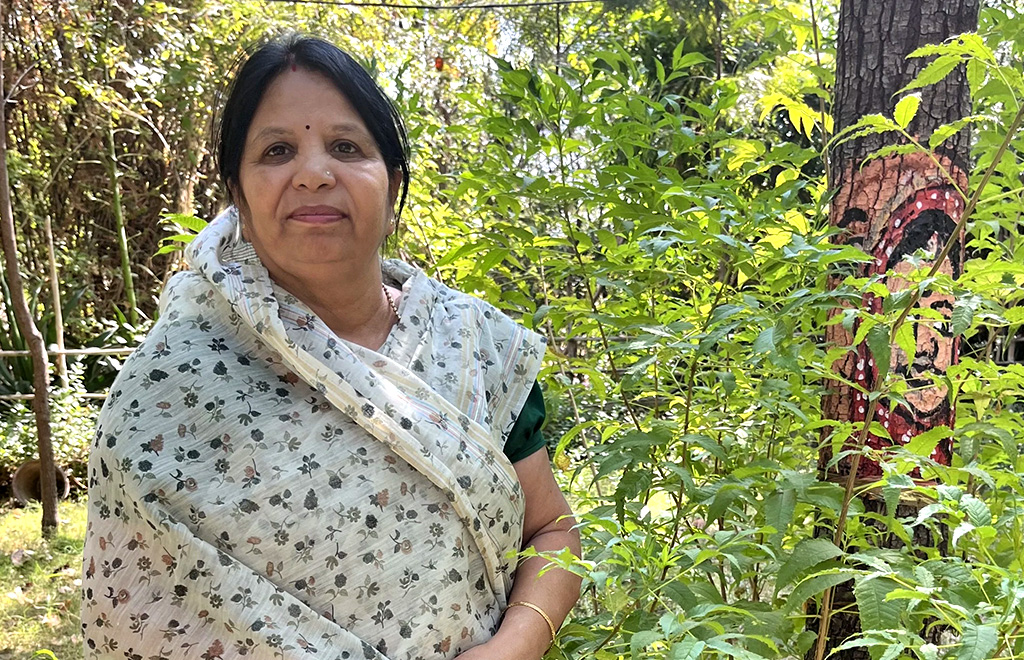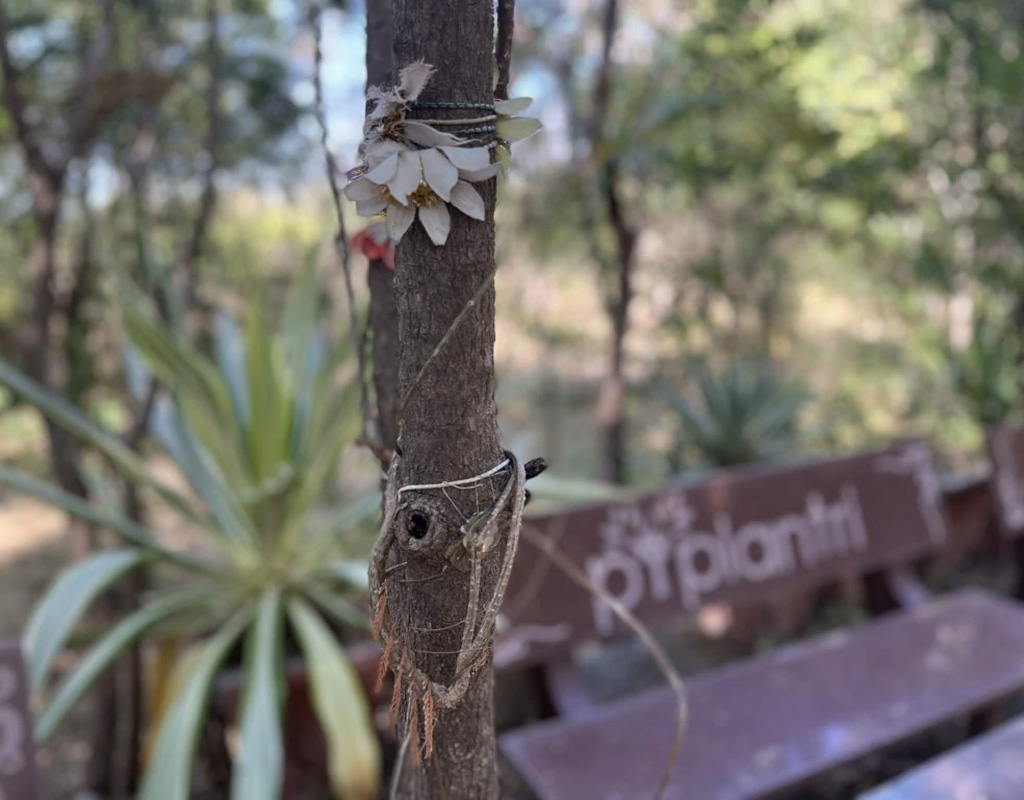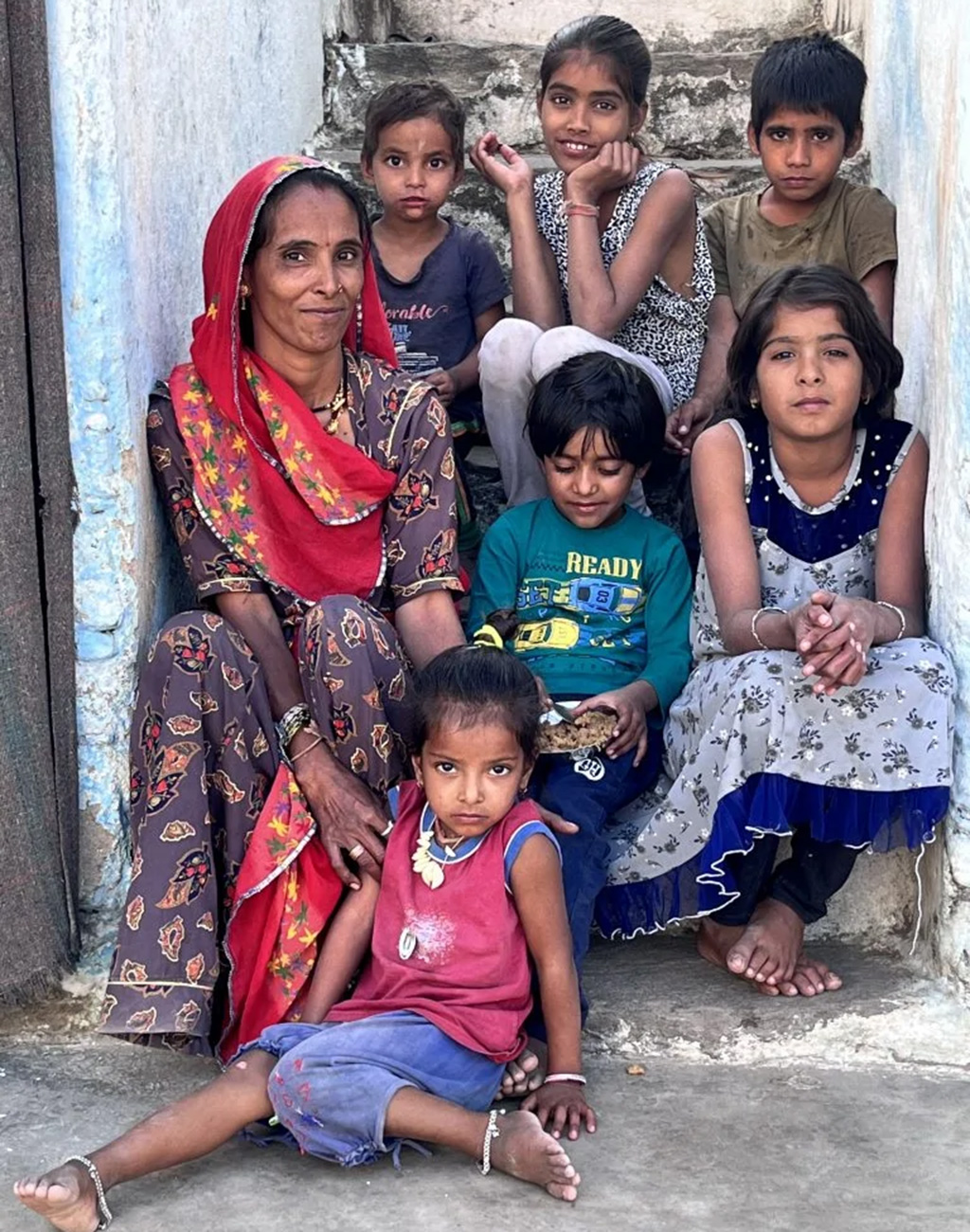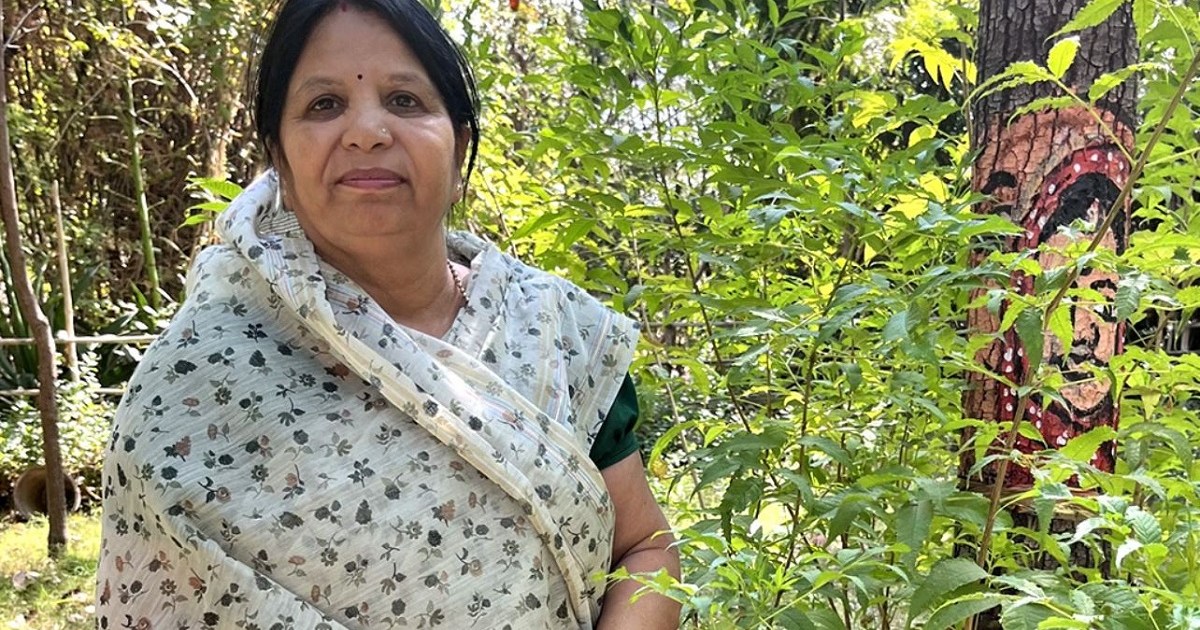A group of students chat amused as they walk in front of a forest in Piplantri, a village in the Indian state of Rajasthan. “Here’s mine,” one shouts, as she gently touches a young neem tree. “And mine”, smiles another, under an Indian gooseberry that spreads its sour fruit on the ground. The forest vibrates with the song of the birds and the laughter of the girls.

“Fifteen years ago this was barren and dry land,” Shyam Sundar Paliwal, a former sarpanch (elected chief of an Indian village) from Piplantri, says of the area. “Instead of this forest, the trees and the clean air that we breathe today, all we had then was marble dust.”
In 2007, he planted his first tree: it was a kadam (a tropical tree) in memory of his 17-year-old daughter Kiran, who died of dehydration. “Piplantri’s transformation started with her,” she says.
“I wish I was here to see it today.”

What Kiran would see are almost 400,000 native varieties of trees. Its growth has improved the situation of the girls and women of the village and is repairing the environmental damage caused by decades of marble extraction.
Plant a seed
As Shyam Sundar and his wife Anita mourned the loss of their joyous teenager more than a decade ago, they realized that in Piplantri, as in most patriarchal communities in India, people preferred sons to daughters. .
Anita, the current Sarpanch of Piplantri, remembers hearing about ancient midwives who could deduce the sex of the fetus from the gait of the pregnant mother. “They administered secret herbs to cause an abortion when they suspected she was a girl,” she says.
Following Kiran’s death and the 13-day mourning ritual, the Paliwals planted the tree in honor of their daughter. Soon, Shyam Sundar convinced other villagers to honor his daughters by planting trees in his name. “As a Sarpanch, I started using public funds available for town development to plant and maintain 111 trees for every newborn girl,” he explains. “Over time, as the trees grew, more people joined the idea.”
The proposal is part of ecofeminism, a movement that establishes a direct correlation between how society treats women, people of color and the marginalized classes and how it treats the environment. India’s Chipko (tree protector) movement has long equated women and the earth for their ability to give life and nurture. It arose as a protest against the commercial felling of trees in 1971 and inspired local women to protect the trees from the ax of the loggers by protecting them with their bodies.
Prem Bai Rajput, a mother of six daughters, was one of the women who embraced the Paliwals’ idea of planting trees. She and her husband, a marble miner, planted 111 trees around her house, the fields and the village commons for their three youngest daughters.
“My oldest daughters were born before this project started,” she says. “Many of our relatives made fun of the fact that he could only have girls.”
But when the fourth Rajput daughter came into the world, the village community collectively gifted the newborn 31,000 Indian rupees (about $380) in a time deposit account for her education or marriage expenses.

In 2007, the community adopted the practice of giving each girl born in Piplantri funds to access at the age of 18. In return, parents agree not only to educate their daughters, but to ensure that they only marry after they turn 18 (26.9% of girls in rural Rajasthan marry at 18). .
“It seemed as if the greener, cleaner air and cooler temperatures created by the trees planted for our girls made people realize that they too have value,” says Rajput. “The sarcastic muttering hasn’t quite stopped yet, but it’s definitely down!”
Anita affirms that today all the girls in the village go to school, in stark contrast to the rest of the state, which has a female literacy rate of 57.6% (compared to the male rate of 80.8%). , the largest gender gap in literacy of any Indian state. The reason, according to Shyam Sundar, is that Piplantri has two upper secondary schools, so the girls do not have to travel long distances (as in other villages) to study.
Kala Devi Paliwal (no relation to Anita and Shyam Sundar), who plants and cares for trees for the village committee, says things have changed dramatically for village girls: “Before we couldn’t leave the house without an escort, and today we can’t. Not only do all our daughters study, but even many of them [mujeres casadas] They work and are independent.
environmental renewal
The tree planting campaign has not only brought about a cultural change. The flourishing vegetation has improved the air, water, soil and microclimate. Years of marble mining had left the landscape severely degraded. But today, while neighboring towns are covered in marble dust, the air in Piplantri is noticeably cleaner. Locals attest that groundwater, especially in forest areas, is between 4.5 and 6 meters. Prior to 2007, groundwater levels had dropped below 152 meters.
“Agriculture had become impossible, forcing the locals to migrate to the cities — or to the marble mines — in search of better livelihoods,” says Shyam Sundar.

In a preliminary assessment of the Piplantri forest floor, Hemlata Lohar, a conservation scientist with a PhD in carbon capture and sequestration, says that the increase in organic matter in the soil has enriched it and improved its water-holding capacity. “This district recorded heavier rainfall than usual this year, but unlike the neighboring stony desert areas, there was no flooding here. This is partly because the trees help soak up the water,” she states.
The local population directly benefits from these changes. Young mother Meetu Kanwar, with her six-month-old daughter Anita sitting on top of her, plucks fresh lemons to make chutney: “It works both ways: we take care of these trees and they take care of us”.
However, not far from the green forest of the village, mining and dumping do not stop. Motivated by the planting of Piplantri trees, some mining companies have begun to green their old dumps, even creating small bodies of water for animals and insects. “I think it will take hundreds of years for these slopes to become natural forests,” says Shyam Sunder wryly. “But this at least minimizes dust and allows the trees to extend their therapeutic influence on this degraded land.”
The Paliwals say that all the funds for the planting and maintenance come from the Government. However, the high level of maintenance, expense, and reliance on a few motivated people make replicability difficult. Also, with no training in forestry or ecological restoration, Shyam Sundar planted some exotic trees that need more attention than the native species.
“But this planted forest is definitely sequestering enough carbon and creating the right environment for the endemics to eventually grow naturally,” says Pankaj Sharma, a conservationist working on a project to develop sustainable marble entrepreneurship.
And in 2018, the Government of Rajasthan developed a training center to educate people in the “Piplantri model” of water harvesting and tree planting.
The plan now is to create women’s cooperatives to sell forest products such as honey, Indian gooseberry products and bamboo, all of which are now harvested from the village’s green commons. Women’s direct economic benefits from the forest could ensure the continued protection of both.
Meanwhile, the Paliwals’ greatest joy is their second daughter, a schoolteacher who already has a family of her own.
“She is blooming, the trees are blooming,” says Shyam Sundar. “Girls, trees, water, biodiversity, village commons: only when they flourish together can one dare to hope for the future.”
Geetanjali Krishna. Over the past two decades she has traveled across India reporting on the environment, climate change and global health. In 2020 she co-founded The India Story Agency, a cross-border collaboration with London-based journalist Sally Howard. She is one of sixteen recipients of the European Center for Journalism’s Global Health Security Fellowship 2021, and her most recent articles can be found in The Times, The British Medical Journal, BBC Future, The Third Pole and Business Standard.
This story was originally published in Reasons To Be Cheerful, and is republished within the Program of the Human Journalism Networksupported by the ICFJ, International Center for Journalists.

Supporting quality journalism is essential to maintain an informed society and build a solid democracy.
I want to subscribe
